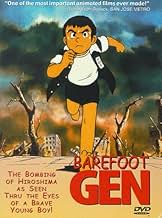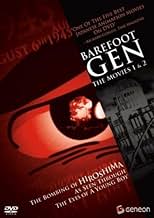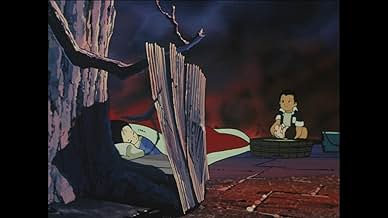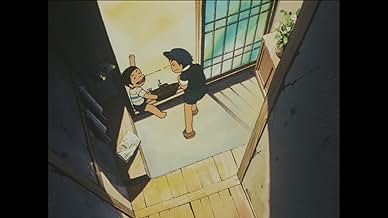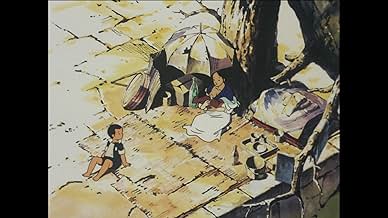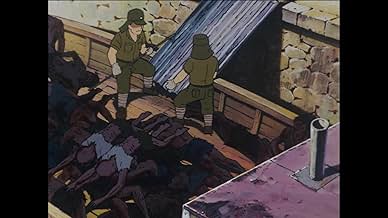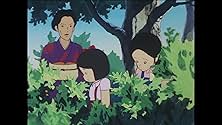युद्ध के खिलाफ एक शक्तिशाली बयान, बेयरफुट जनरल एक लड़के के जीवन और जापानी लोगों के जीवन पर परमाणु बम के प्रभाव के बारे में एक परेशान करने वाली कहानी है.युद्ध के खिलाफ एक शक्तिशाली बयान, बेयरफुट जनरल एक लड़के के जीवन और जापानी लोगों के जीवन पर परमाणु बम के प्रभाव के बारे में एक परेशान करने वाली कहानी है.युद्ध के खिलाफ एक शक्तिशाली बयान, बेयरफुट जनरल एक लड़के के जीवन और जापानी लोगों के जीवन पर परमाणु बम के प्रभाव के बारे में एक परेशान करने वाली कहानी है.
- पुरस्कार
- कुल 1 जीत
- Gen
- (वॉइस)
- Gen (1995)
- (English version)
- (वॉइस)
- Kimie
- (वॉइस)
- Kimie (1995)
- (English version)
- (वॉइस)
- Shinji
- (वॉइस)
- …
- Shinji (1995)
- (English version)
- (वॉइस)
- (as Brianne Siddal)
- Ryuta (1995)
- (English version)
- (वॉइस)
- Daikichi
- (वॉइस)
- Daikichi (1995)
- (English version)
- (वॉइस)
- (as Kurk Thornton)
- Eiko
- (वॉइस)
- Eiko (1995)
- (English version)
- (वॉइस)
- Eizo
- (वॉइस)
- Eizo
- (English version)
- (वॉइस)
- (as Amike McConnohie)
- …
- Seiji
- (वॉइस)
- Hana
- (वॉइस)
- Pak
- (वॉइस)
- Pak
- (English version)
- (वॉइस)
- …
फ़ीचर्ड समीक्षाएं
He was born in Hiroshima, and was in the city when it was destroyed by an atomic bomb in 1945. All of his family members who had not been evacuated died in the bombing except for his mother, and an infant sister who died several weeks after the bombing.
In 1961, Nakazawa moved to Tokyo to become a full-time cartoonist, and produced short pieces for manga anthologies such as Shonen Gaho, Shonen King, and Bokura.
In 1966, following the death of his mother, Nakazawa returned to his memories of the destruction of Hiroshima and began to express them in his stories. Kuroi Ame ni Utarete (Struck by Black Rain), the first of a series of five books, was a fictional story of Hiroshima survivors involved in the postwar black market. In 1972, Nakazawa chose to portray his own experience directly in the story "Ore wa Mita" ("I Saw It"), published in Monthly Shonen Jump (In 1982, the story was translated into English and published as a one-shot comic book by Educomics as "I Saw It").
Immediately after finishing "I Saw It", Nakazawa began his major work, Hadashi no Gen (Barefoot Gen). This series, which eventually filled ten volumes (six volumes in English translation), was based on the same events as "I Saw It" but fictionalized, with the young Gen as a stand-in for the author. Barefoot Gen depicted the bombing and its aftermath in graphic detail, but also turned a critical eye on the militarization of Japanese society in the World War II years, and on the sometimes abusive dynamics of the traditional family. Barefoot Gen was made into an animated film, released in 1983. It was followed three years later by a sequel.
The film is adapted as an anime from Keiji's short manga series depicting all that he experienced just at the age of six when the bombings hit. His story truly is one of the most amazing things you will ever hear. Nothing else in film has ever captured the effects of the bombings in such a real and emotional way. It shows the viewers what really did happen and what we were never told. It shows us how real the bombings really were as we follow Gen through his struggle for survival during Japan's darkest hours.
If you haven't seen this film, you are missing out. While the film does not hold back on the gritty details, and what happens to the people of Japan throughout the whole of the film is very horrifying, you cannot miss this film due to these aspects. It's these things that make it so real and it would be a tragedy to ignore this film. It opened my eyes to what really went down in Hiroshima and I almost felt personally affected. During my whole time watching this film, I kept finding myself in disbelief that something like this actually occurred in our history, and recently at that. I mean, a whole society was rebuilt on the effects of the bombings and once again shows us how very, very wrong war is. One of the best films I have ever seen.
9.5/10 Hamish Kearvell A.K.A Screaming Japan Productions - www.myspace.com/screamingjapanproductions
Some Russian people still recall memories of this cartoon, though, it still has not been officially released in good quality. It must mean something. The animation film was shown decades ago in our theatres and since then has been erased from any means of media - but we still remember it and respect it. "Finding Nemo" is good. "Spirited Away" is better. But this one is a masterpiece that has real history as a background.
Judging by the number of votes, not so many IMDb visitors are aware of this gem. Alas, before making atomic quarrels one should watch this film. You cannot watch it and pass by ignorant.
My mark is a definite 10. Thank you for attention.
I found this movie informative but disturbing. I have heard it being described as a tragicomedy. I think this is a fitting description but just be prepared because it really does make giant leaps from the genuinely tragic and sad to light heartedness. You won't know whether to laugh or cry. Actually, you will. A little cry would be totally justified so have a hanky at the ready and don't watch it with your mates from down the pub.
As with Nosaka's "Grave of the Fireflies," Gen deals with a Japanese youth in the waning days of WW II. The first 30 minutes shows him to be typical for his stage of life, swinging between a self-centered boy and an adult. He is suddenly thrust into the position of head of the family after the Hiroshima bomb kills his father, brother, and sister, and destroys the city. The remainder of the movie deals with his transformation into an adult, with adult sensibilities and adult responsibilities.
Gen is clearly a Japanese story - the author, Nakazawa, lived through the event as a child. But the story could have taken place in Dresden or London just as easily. Although the atomic bomb is the event the movie revolves around, the story is really about the people - the children - and the effect the event has on their lives.
It's too bad that so much of the books had to be sacrificed to the time limits of a film. The novels delve much more deeply into the cruel society that Japan was in the 1940s. For example, much more was made of the neighbor's Korean background in the book; in the movie, you wouldn't realize the ethnicity if you didn't think about the name.
As a conventional film, Gen would probably be too honest to find real appeal in the U.S. Worse, the animation format will probably dissuade those who would otherwise see and appreciate it. Like most Japanese anime, this is not a "cartoon." It is a serious film in an unconventional - for the U.S. - medium.
The DVD transfer is excellent and belongs in your collection. This is a movie that continues to educate and enlighten with each viewing.
क्या आपको पता है
- ट्रिवियाThe author of the "Barefoot Gen" manga, Keiji Nakazawa, said that 70% of the story is based on true events from his experience of the atomic bombing of Hiroshima.
- गूफ़When Gen and Shinji take a big bite from a sweet potato from each end, they are then told by Eiko to give the sweet potato to their mother. Once the sweet potato is given to her, it is whole again.
- भाव
Daikichi Nakaoka: This war can't be right. But it's only the cowards like me who dare say it. If there were only a few more like us. You know, sometimes it takes more courage not to fight than to fight, to not want to kill when all around you are calling out for blood. That's real courage in my book. If you boys remember nothing else I teach you, I hope you'll remember that.
- क्रेज़ी क्रेडिटThe closing credits run horizontally from the left side. Above the credits is footage of a paper boat lantern built sailing past multiple lanterns. After the boat has slowly vanished, the lanterns slowly turn into stars.
- इसके अलावा अन्य वर्जनThere's a slightly different version of the movie on the website Rumble. Only one change has been applied to it which is the cut to the scene where Kimie (Gen's mom) finds a dead woman on the forest.
- कनेक्शनFeatured in Hadashi no Gen 2 (1986)
टॉप पसंद
- How long is Barefoot Gen?Alexa द्वारा संचालित

